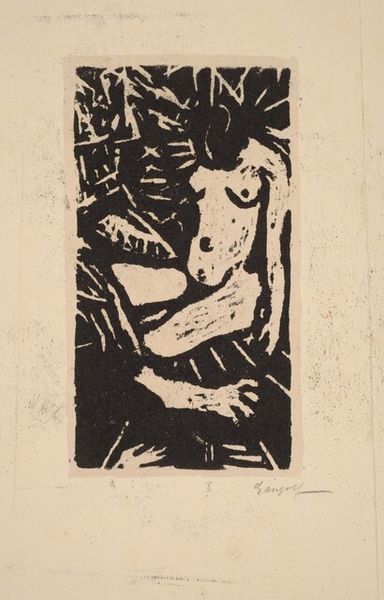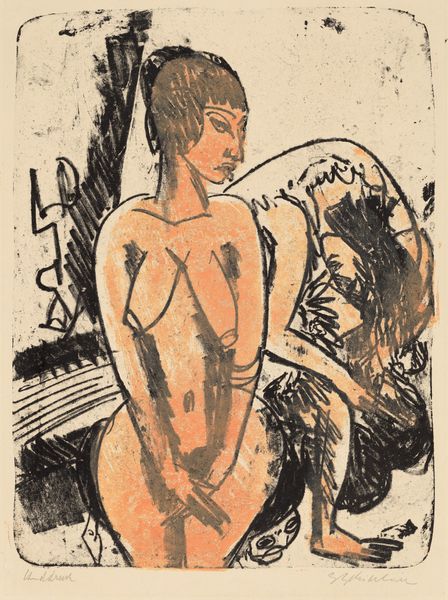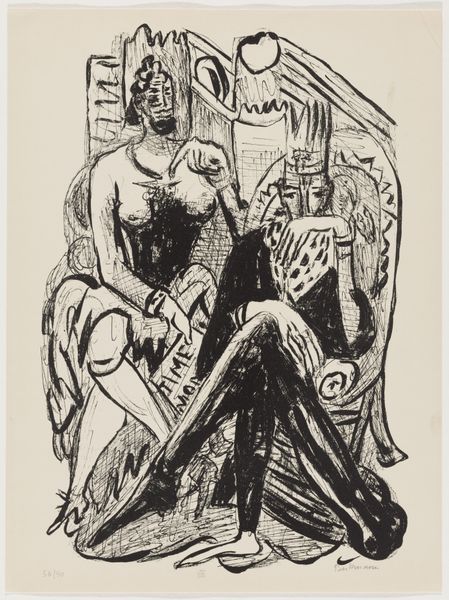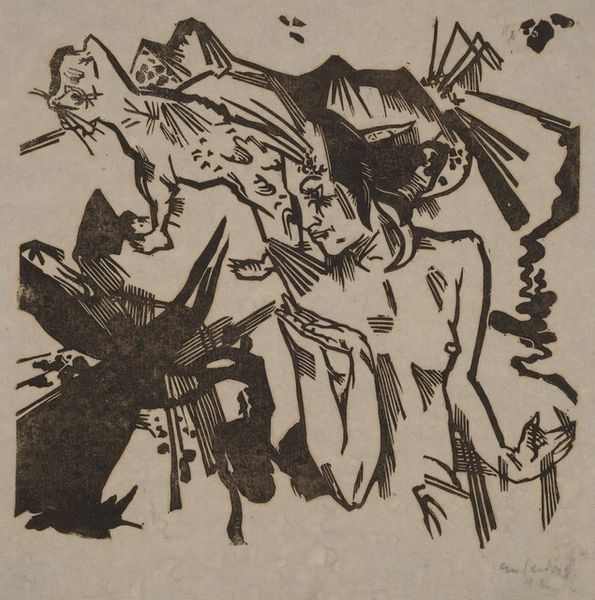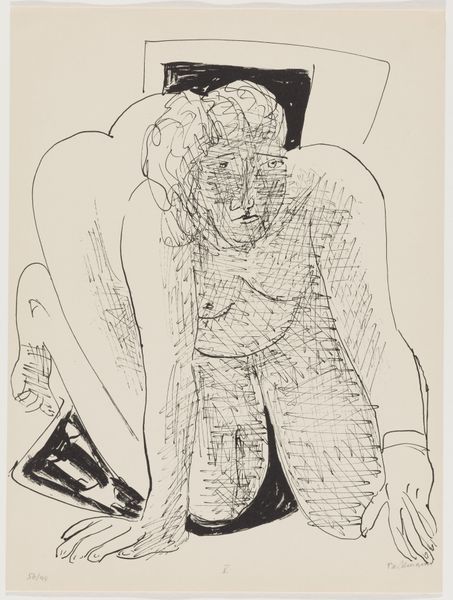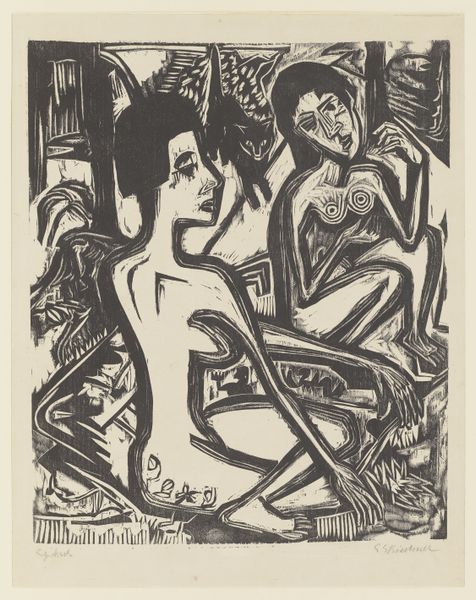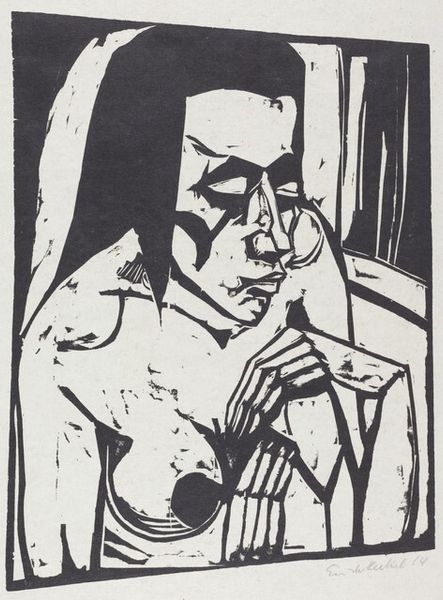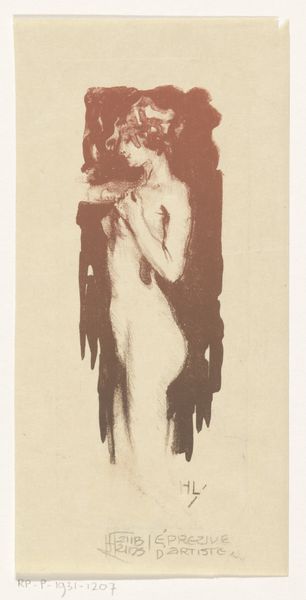
drawing, print, woodcut
#
portrait
#
drawing
# print
#
caricature
#
figuration
#
expressionism
#
woodcut
#
nude
Copyright: Public Domain
Curator: Looking at this woodcut print, “Melancholie (Selbstbildnis mit Erna)”, made in 1922 by Ernst Ludwig Kirchner, I'm struck by its starkness. Editor: Melancholy indeed! It feels haunted, doesn't it? The colours are so subdued, and those faces… elongated, almost like they’re melting. Curator: Kirchner was a master of the Expressionist style, of course, and here, his anguished state becomes clear, using such exaggerated and unsettling forms. Editor: The woodcut feels so raw, doesn’t it? Like he's wrestling with the material itself, those rough cuts screaming for release. There is the use of just a few shades - purple, black and white - that intensifies the disquiet, as it flattens the composition and isolates the two figures from a world of safety and plenty. What kind of world was this for the artist? Curator: He was going through a turbulent period personally. He moved to Switzerland after suffering from mental health issues relating to his experience during World War I. This artwork functions almost like a psychological portrait reflecting his struggle and inner turmoil and social isolation, also. He made this image in the middle of a deadly pandemic - does that give you pause for reflection? Editor: I had no idea - in an era overwhelmed by war, it appears that he was dealing with a different trauma! The title hits hard now: "Melancholy, Self-Portrait with Erna." The way he renders himself feels exposed, fragile even, positioned just behind Erna. And the strange curves above their heads - do they imply thoughts, or something even less visible, like bad omens? Curator: The bold use of black and the simplification of form contribute to that sense of unease, too, the very graphic qualities of woodcut so right for that sense of emotional rawness he must have felt. It mirrors how so many were also cut off from everything when influenza came to town. Editor: It is deeply expressive – but perhaps more unsettling than beautiful, really showing the social unease as if translated from internal anguish. There is also a power in that vulnerability that stays with you. I do have more understanding now; I almost did not wish to look for long, at first! Curator: Art can invite the difficult questions, or confront tough times. And looking back at the image now, so much after it was printed, still it does not flinch or hide. It tells its tale.
Comments
No comments
Be the first to comment and join the conversation on the ultimate creative platform.



